
|   |

|   |
Postcards from SPIC MACAY’s National Convention 2012 Text & pics: Veejay Sai e-mail: vs.veejaysai@gmail.com June 22, 2012 Like a small seed germinates into a large tree if carefully nurtured, an idea, if well implemented snowballs into something that serves everyone’s good. The Society for the Promotion of Indian Classical Music and Culture Amongst Youth or more popularly called SPIC MACAY, the brainchild of Dr. Kiran Seth, began three decades ago and metamorphosed into a huge banyan tree, like the famous Thimmammamarimanu. With countless roots and chapters growing endlessly, SPIC MACAY is probably one of the finest urban cultural revolutions any country would have witnessed. 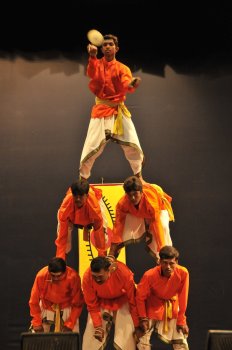 Kamsaale, folk dance of Karnataka
The 27th National Convention held at the National Institute of Technology in Surathkal (Karnataka) saw yet another successful year of SPIC MACAY’s fabulous work. In a hectic fun-and-activity packed week, over 1500 student and teacher volunteers from across the country participated in the convention. From fresher-inculcations to orientation programs to intensive courses in music, dance, theatre, arts and crafts, the whole campus of NITK stayed abuzz. SPIC MACAY that had initially started off only to promote music soon took dance and other arts as well. This year’s convention saw some of the country’s finest gurus and artistes perform, interact and exchange ideas with the participants. A typical day at the SPIC MACAY convention began at 4.30am with yoga sessions. After an early breakfast the participants were divided into various groups in order of the intensive courses they chose to attend though the course of the week. This year, twenty eight intensive courses were offered over a span of one week across arts and crafts to music and dance. Kuchipudi by gurus Narasimhachari and Vasanthalakshmi from Chennai, and Vyjayanthi Kashi from Bangalore, Bharatanatyam by Malavika Sarukkai and gurus VP Dhananjayan and Shanta Dhananjayan, Odissi by Madhavi Mudgal, Pung Cholom drummers, Koodiyattam by Margi Madhu and Kathakali by Kalamandalam Kuttan’s troupe. Folk dance performances included Yakshagana by Chittane Ramachandra Hegde and his group, Kamsaale and Patakunitha. Intensive courses Out of the 2000 participants who attended the convention a large percent of it were students who were grouped in order of their areas of interest and sent to intensive courses for a week with the maestros. While some of the participants had rudimentary knowledge of the dance forms, most of them were total freshers and were interacting with dance gurus and the dance form for the very first time in their lives. Bharatanatyam diva Malavika Sarukkai who performed on the inaugural evening of the festival stayed back for the rest of the week conducting an intensive course. She taught the participants of her class excerpts from the ‘Krishna Karnamritam’. Her protégé Mythili Prakash was seen in the class too, sometimes assisting her guru to conduct the workshops. 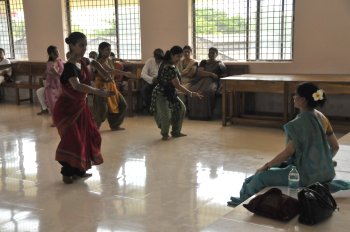 Malavika Sarukkai taking class 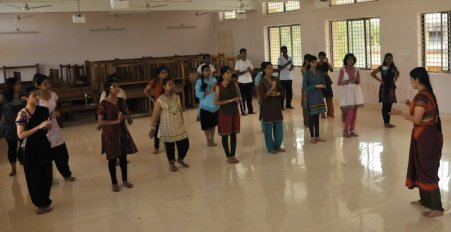 Vasantalakshmi Narasimhachari taking class 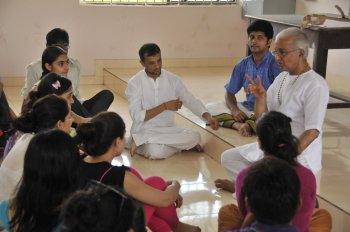 VP Dhananjayan taking theory class 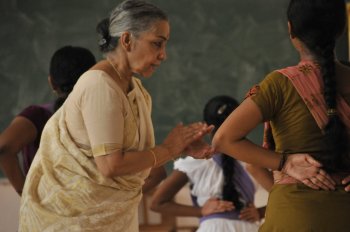 Shanta Dhananjayan taking class Gurus VP Dhananjayan and Shanta Dhananjayan were seen teaching the very basics of Bharatanatyam to their class. From getting students to stand in a proper aramandi to correcting their hands, both the gurus patiently sat with each and every student. VP Dhananjayan also gave lectures on Indian dance and art history to other interested groups whenever time permitted. It might have been their able group-teaching methodology and technique from Kalakshetra that one could see how organized their classrooms were. Kuchipudi gurus Narasimhachari and his graceful better half Vasantalakshmi Narasimhachari took time out from their busy schedules to conduct week-long intensive courses in Kuchipudi basics. Working as a team has its own positive effects. They taught the children a Narayana Theertha tarangam. Kuchipudi dancer Vyjayanthi Kashi also took time out to come and stay on for a week from her busy schedule. Ever since she became the Chairperson of the Karnataka State Sangeet Nritya Academy, it seems almost impossible to see her. “As a dancer one has to understand others, establish a rapport with the society, at the same time educate them and leave behind not only a generation of dancers but well educated audiences too. Since the SPIC MACAY participants are primarily students, performing for them and sharing our work through workshops is a very different and satisfying experience. As an artiste of experience, I think we can lead them on to a meaningful and joyful journey, inspiring them and sensitizing them into the roots and depths of our land and culture. I only wish and hope that talents identified during such workshops and conventions are further encouraged to continue learning the art form of their choice under specialized training,” she said. She taught her class some basics of Kuchipudi and a jati. 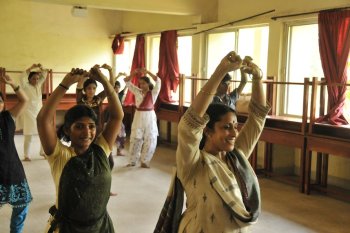 Vyjayanthi Kashi taking class 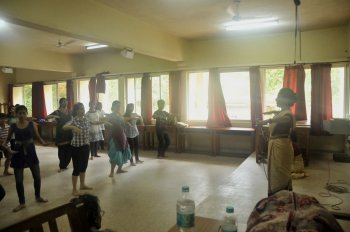 Madhavi Mudgal taking class Odissi dancer Madhavi Mudgal stayed for the week-long convention and took intensive courses for many interested children. Teaching them a very basic Pallavi, Madhavi’s class was chock-a-block with youngsters who couldn’t get enough of her class. “Every dance form has a unique attribute that makes it beautiful and in Odissi, I wanted to understand the kinesthetics behind the torso movement. This movement of torso becomes more relevant for me because Mohiniattam also involves the use of torso and both dance forms are rich in lasya elements. Learning a new art is always challenging especially when they are capsuled as an Intensive Workshop. Observing Madhavi-ji closely was a great learning experience. She is quite a taskmaster who doesn't settle for anything less than 110%. In the five-day program, what she wanted from the students was well structured and planned. Obviously, the five days are not going to make them dancers but they will definitely be able to relate to the movement of the dancers when they watch a performance in the future. I feel Madhavi-ji has certainly succeeded to subconsciously tune their minds making it sensitive to the technical nuances of the dance forms. As for me, Madhavi-ji's initiation has helped me add dimensions to the aesthetics salient to this dance form in the practical sense,” said Deepa Chakravarthy, a trained Mohiniattam dancer who was taking the intensive course offered in Odissi. On the last day, Madhavi Mudgal was joined by her niece, the very charming and beautiful Arushi Mudgal. Both the aunt and the niece enthralled audiences on the last evening of the convention. Kalamandalam Kuttan, one of the senior most maestros of Kathakali came in with his live music band to teach the students of his intensive course, a quick refresher of the Navarasas. Margi Madhu and his group that performed ‘Balivadha’ at the convention stayed on to conduct a crash course in Koodiyattam. It is almost impossible to teach anything in five days in both the dance forms. But both the gurus managed to squeeze in a bit of theory to their students. It would have been wonderful to see a bit of Kathak and Manipuri, the two dance forms that seem to have been left out during this convention. The biggest complaint most participants seemed to have was the time management factor. Many also questioned how far could a week-long super-crash course get to create awareness on arts, under extreme industrial conditions, not to forget the scorching summer heat! 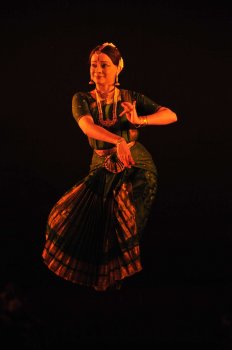 Malavika Sarukkai (Bharatanatyam) 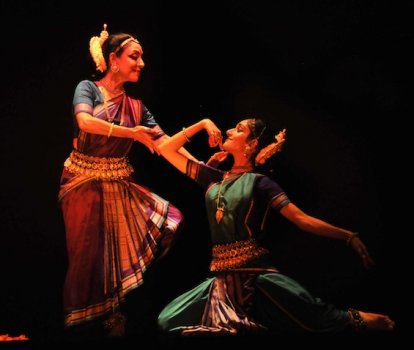 Madhavi Mudgal and Arushi Mudgal (Odissi) 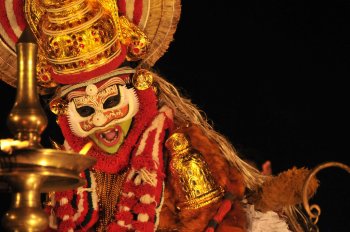 Margi Madhu (Koodiyattam) 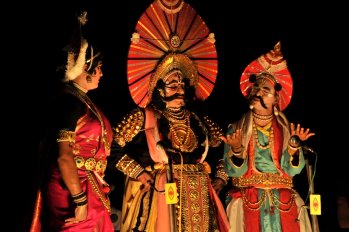 Chittane Ramachandra Hegde's group (Yakshagana) On the last day of the convention, all the participants of the various intensive courses presented what they learnt over a week. One had to see it to believe it! You wouldn’t ever know that most of the students were dealing with dance for the very first time in their lives. The way they presented their items with such ease and charm could have put most professional dancers to shame. One must congratulate all the gurus who took time out from their busy schedules to teach these students with a lot of patience and without throwing usual artiste-tantrums. More than that, big kudos to SPIC MACAY for triggering off interest in our Indian classical dances. You never know which of these children might become ambassadors of the art form in their future. The dance component of this year’s convention was highly interesting and equally successful in its agenda. A few months ago, there was a sudden buzz amongst the artistes’ community and rasikas if SPIC MACAY was a lost cause. This thought came about because of several issues that deal with the organization and the way it is run. The organization’s Delhi-centric policies that don’t really allow for autonomy in the regional centers were one of the many reasons for it. Many artistes have also been repeated, while there is a whole new generation of talent waiting out there more than willing to help their cause, but totally neglected and hence disillusioned by the agendas and policies the organization functions on. If they wish to achieve their Vision-2020, it would be best to be as inclusive as possible as there is a whole bunch of people willing to support their vision. Hopefully this will change soon and SPIC MACAY as a cultural movement will become a mouthpiece for the urban revival of Indian classical arts. Veejay Sai is a writer, editor and a culture critic. |